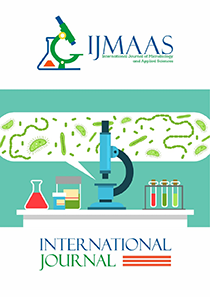Prevalence and Molecular Characterization of Escherichia coli Isolated from Periwinkles (Tympanotonos fuscatus and Pachymelania aurita)
Vol 3, Issue 1, 2024
KEYWORDS
Escherichia coli, molecular characterization, periwinkles, prevalence, seafood.
Abstract
Seafood like periwinkles is reported to contain high bacterial load and serve as a route of transmitting pathogenic Escherichia coli into the human body. This study determines the prevalence and genomic characteristics of Escherichia coli isolated from periwinkles sold in Port Harcourt, Rivers State, Nigeria. Fifty-four (54) samples (raw and parboiled) were purchased from three different markets and subjected to standard bacteriological and PCR based genomic screening procedures. Results showed Oil mill market recorded the highest Total Coliform Count (TCC) of 12.5±10.11×104CFU/g while the least count of 5.72±2.02×104CFU/g was from Creek Road Market. There was no significant difference (P>0.05) in the TCC between the markets sampled. Oil mill market also had the highest count (6.98±3.33×103Cfu/g) of Fecal Coliform (FCC), while the least (2.12±0.82×103CFU/g) was from Mile 3 Market. There was a significant difference (P<0.05) in the FCC between the markets sampled. Data obtained based on the type of samples showed the highest TCC (13.5±8.64×104CFU/g) was associated with the raw samples, while the least (4.92±3.16×104CFU/g) was obtained from parboiled-with-no-shell. Data obtained based on the type of species of periwinkles showed that Pachymelania aurita recorded the highest TCC (9.24±5.34×104CFU/g), while the least was 9.1±8.27×104CFU/g, obtained from Tympanotonus fuscatus. The prevalence of E. coli based on the markets sampled was in the order; Creek road (66.7%), Mile 3 (50%) and Oil mill (33.3%), which was however higher in P. aurita (55.6%) than T. fuscatus (44.4%). Molecular screening of the isolates indicated the presence of STX2 gene markers. The study thus revealed the pattern of E. coli contamination of periwinkles, with potentials to cause foodborne infection due to the presence of toxigenic genes. Safe handling and proper processing of periwinkles is therefore recommended to prevent any outbreak.
Current: Vol. 4, Issue 1, 2025

Call for papers
The International Journal of Microbiology and Applied Sciences warmly welcome your valuable articles for publication.
